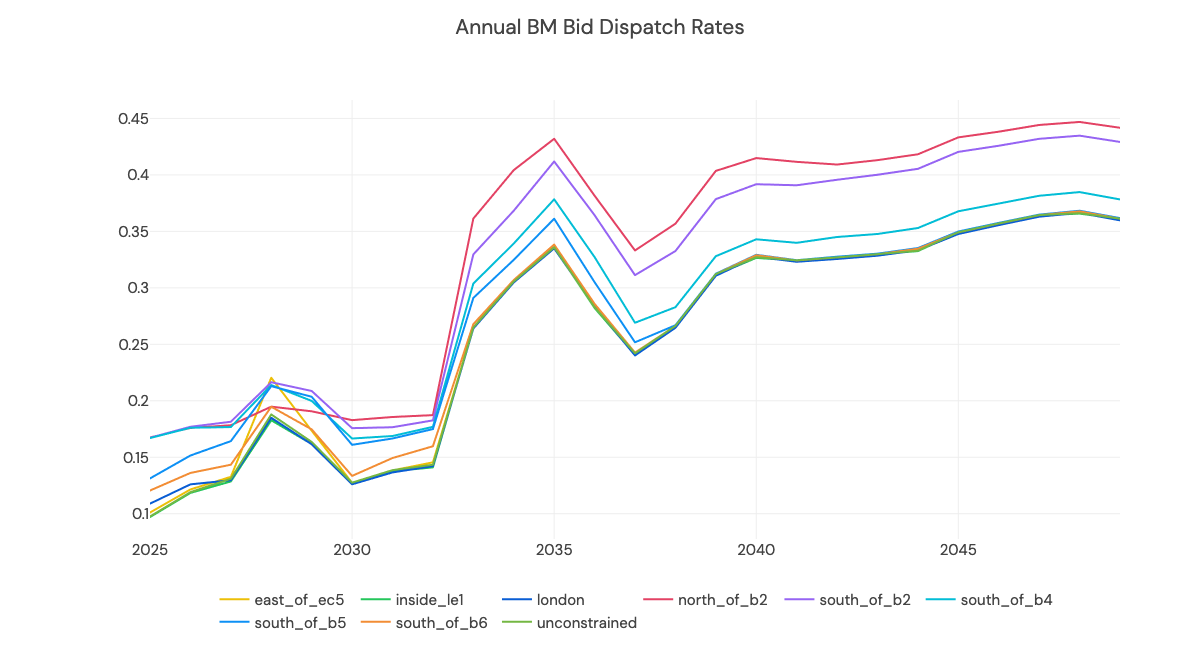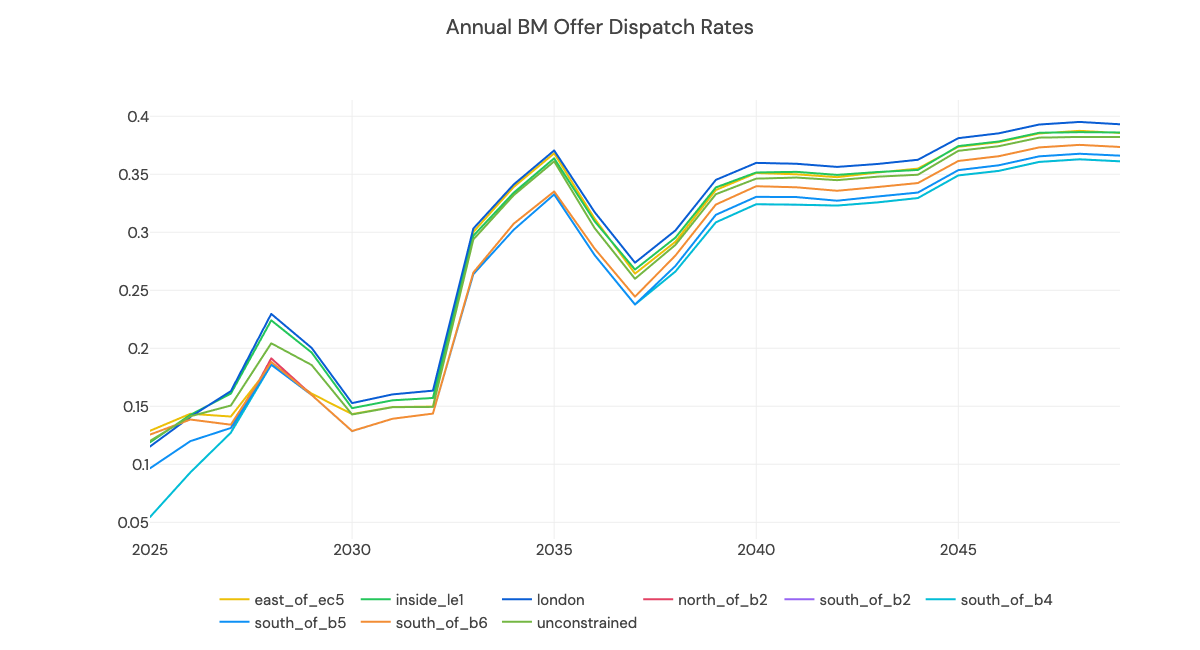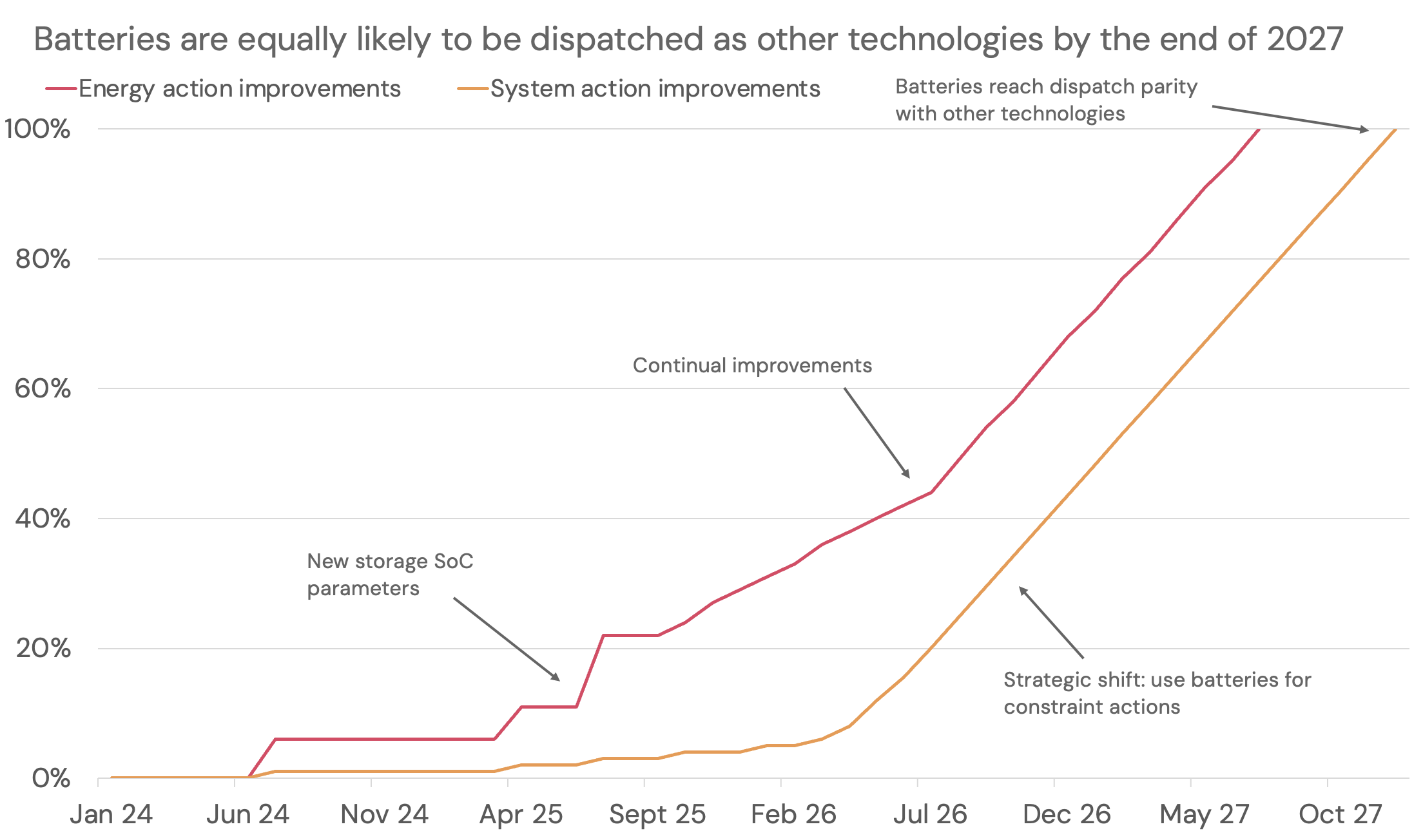Dispatch rates of batteries
To get the dispatch rates of batteries, we first estimate the dispatch rates of a generic flexible technology (like a CCGT).
We then assume that batteries will take a few years to reach a level playing field and blend today's BESS dispatch rates with a longer-term outlook where they have technical parity within the dispatch systems in the NESO control room.
Dispatch rates of generic flexible technologies
System and energy dispatch rates are calculated depending on the volume required and capacity of flexible generation able to meet that volume:
- System dispatch rate for bids and for offers, in each region (MWh/MW available) = half-hourly volume of bids and offers required in each region, divided by the in-merit, available flexible generation in each region.
- Energy dispatch rate for bids and for offers, in each region ((MWh/MW available) = the average power dispatch each day for energy balancing divided by the in-merit, available flexible generation nationally.
The resulting annual averages for each region are shown below. Many of the observed trends in dispatch rates of system and energy actions are similar, and explained by reinforcements to the transmission system.
For example, projected reinforcements to the B6 and B7a boundary in 2035 cause dispatch rates to 2037 to fall.


Dispatch rates of batteries
Battery dispatch rates in the BM are evolving, with observed dispatch rates doubling over the last 12 months.
This is due (in large part) to the Open Balancing Platform (OBP). Given the progress of OBP, Modo estimates the improvement in energy and system dispatch rates for batteries to 2027. The rate of batteries doing system actions increases later, once (simpler) energy actions are prioritized through tools like bulk dispatch within OBP.

Here, 100% means that the control room treats the battery in the same way as any other technology; i.e., it reaches parity with traditional thermal plants in the volumes being dispatched via the BM.
In the period before 2027 - before technical parity is reached and numbers are below 100% - we blend current dispatch rates with those coming out of the model for both system and energy dispatch rates.
After 2027, when percentages reach 100%, we use numbers coming out of the model.
Updated about 1 month ago